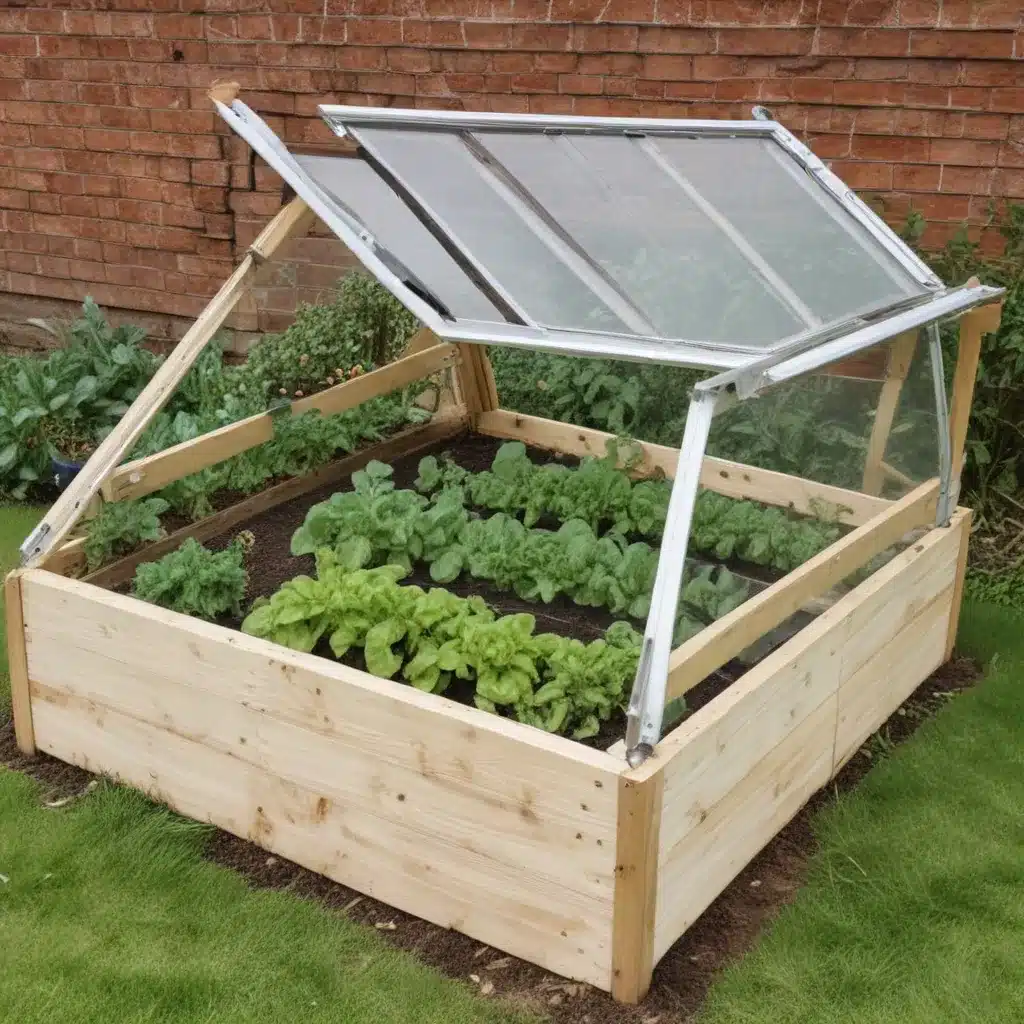
As an educator at Crooked Pines Farm, I’m often asked how our gardeners manage to harvest fresh produce all year round, even in the face of harsh winter conditions. The secret lies in the strategic use of cold frames – these simple yet effective garden structures allow us to extend our growing season and provide a controlled environment for our crops.
Gardening Practices
Cold frames are essentially miniature greenhouses, typically made from a wooden or metal frame with a transparent cover. They trap heat from the sun and create a microclimate that protects plants from frost, wind, and other inclement weather. By utilizing cold frames, our gardeners can get an early start on spring planting, keep crops thriving well into the fall, and even harvesting through the winter months.
Benefits of Extended Growing Seasons
The advantages of extended growing seasons are numerous. For one, it allows us to maximize our garden’s productivity by squeezing in extra harvests before and after the traditional growing season. This translates to a bountiful supply of fresh, nutritious produce for our farm stand, CSA boxes, and cooking demonstrations.
Moreover, the ability to grow year-round fosters a deeper connection to the land and the rhythms of nature. Our young visitors delight in observing the seasonal changes and monitoring the progress of their seedlings, even in the midst of winter. This hands-on learning cultivates an appreciation for where our food comes from and the importance of sustainable agriculture.
Cold Frame Construction
Cold frames can be as simple or as elaborate as you’d like. The basic design consists of a four-sided wooden or raised bed frame, with a transparent cover on top. This cover is usually made of glass, acrylic, or polycarbonate panels, which allow sunlight to penetrate while trapping heat inside.
For added insulation, the back of the cold frame is often slightly taller than the front, creating a slight slope that helps shed rain and snow. Many gardeners also incorporate hinges or handles on the cover to allow for easy ventilation on warmer days.
Optimal Cold Frame Placement
When siting your cold frame, it’s essential to choose a location that receives maximum sunlight throughout the day. A south-facing orientation is ideal, as it allows the structure to capture the sun’s rays and retain heat more efficiently. Avoid areas with heavy shade from trees or buildings, as this can limit the frame’s efficacy.
Site Preparation for Cold Frames
Proper site preparation is key to the success of your cold frame. Let’s dive into the essential considerations:
Soil Considerations
The soil within your cold frame should be nutrient-rich and well-draining. Incorporate compost or other organic matter to improve soil structure and fertility. Avoid heavy, compacted soils, as they can impede root growth and drainage.
Sunlight and Shade
As mentioned earlier, sunlight exposure is crucial. Aim for a location that receives at least 6-8 hours of direct sunlight per day, even during the shorter winter months. Monitor the site throughout the day to ensure it meets this requirement.
Drainage Requirements
Proper drainage is essential to prevent waterlogging and root rot. If your site has poor drainage, consider building your cold frame on a slight slope or incorporating a gravel or crushed stone base beneath the structure.
Cold Frame Cultivation Techniques
Once your cold frame is in place, it’s time to start cultivating your crops. Here are some essential techniques to keep in mind:
Seed Starting and Transplanting
Many gardeners use their cold frames as a nursery for starting seeds and hardening off transplants. This gives your plants a head start before moving them into the main garden. Be sure to introduce them gradually to the colder outdoor conditions to avoid transplant shock.
Temperature Regulation
Maintaining the optimal temperature within your cold frame is crucial. On sunny days, the frame can quickly overheat, so be diligent about ventilation. Open the lid or remove the cover entirely to prevent your plants from getting scorched. Conversely, on chilly nights, you may need to add extra insulation, such as straw or row cover, to retain heat.
Watering and Ventilation
Water your cold frame crops judiciously, taking care not to over-water. The enclosed environment can lead to excess moisture, which can encourage disease. Provide adequate ventilation to promote air circulation and prevent stagnant, humid conditions.
Extending the Growing Calendar
With the help of cold frames, our farm’s growing calendar extends well beyond the typical spring-to-fall season. Here’s how we make the most of our extended seasons:
Early Spring Plantings
As soon as the ground is workable, we can start sowing cool-weather crops like lettuce, spinach, radishes, and peas in our cold frames. This gives us a head start on the growing season, allowing us to harvest fresh produce weeks before our neighbors.
Late Fall Harvests
Even as the days grow shorter and temperatures drop, our cold frames enable us to continue harvesting a diverse array of greens, root vegetables, and brassicas well into the fall and early winter. With the proper protection, we can enjoy the sweet, nutty flavors that develop in frost-kissed crops.
Year-Round Production
In some cases, our hardiest cold-tolerant crops, such as kale, Swiss chard, and overwintering onions, can be grown and harvested throughout the entire year. This ensures a steady supply of fresh, nutritious produce for our farm stand, CSA members, and cooking demonstrations.
By leveraging the benefits of cold frames, we at Crooked Pines Farm are able to extend our growing season and provide our community with an abundance of fresh, local produce year-round. Whether you’re a seasoned gardener or just starting out, I encourage you to experiment with cold frames and unlock the potential of your own growing space. Happy gardening!


